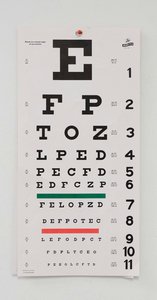Last Updated on May 27, 2025
 Vision changes can occur during diabetes diagnosis or whenever blood sugar levels become poorly controlled. These fluctuations are often temporary but can be alarming, especially for those unfamiliar with the effects of high blood sugar on the eyes.
Vision changes can occur during diabetes diagnosis or whenever blood sugar levels become poorly controlled. These fluctuations are often temporary but can be alarming, especially for those unfamiliar with the effects of high blood sugar on the eyes.
One of the most common early changes is blurry vision caused by fluctuating blood sugar levels, which affect the shape of the lens in the eye. When blood sugar levels are high, the lens swells, altering its ability to focus and leading to temporary changes in vision. Conversely, as blood sugar levels drop—especially when treatment with insulin or other medications begins—the lens gradually returns to its standard shape, causing temporary blurriness again. This process can take several weeks to stabilize.
Surprising Vision Changes with Diabetes
Some people notice a sudden improvement in their distance vision before receiving a diagnosis of diabetes. This occurs because the abnormal swelling of the lens temporarily alters how light is refracted in the eye, thereby reducing the need for corrective lenses. However, once treatment starts and blood sugar levels begin normalizing, the swelling diminishes, and vision can blur again, often frustrating those who thought their eyesight had permanently improved.
This transition period can last three to four weeks and is sometimes accompanied by mild headaches as the eyes adjust. While these changes can be unsettling, they are rarely a sign of permanent damage to the eyes.
Managing Temporary Vision Changes
If blurred vision occurs after starting diabetes treatment, an eye exam can confirm that the issue is due to fluctuating blood sugar rather than diabetic eye disease. In most cases, the best approach is patience—waiting for blood sugar levels to stabilize before making any permanent changes to prescription eyewear.
One practical solution during this adjustment period is to use over-the-counter reading glasses. Many people find that trying on different strengths of reading glasses at a pharmacy helps them temporarily manage vision changes. As blood sugar levels improve, weaker lenses may be needed until the regular prescription takes effect again.
⚠️ Important Tip: Never invest in new prescription lenses while experiencing uncontrolled blood sugar fluctuations, as they may quickly become ineffective once glucose levels stabilize.
When to Worry About Long-Term Eye Damage When Diabetes Affects Your Vision
While temporary vision changes are common at diagnosis, permanent eye damage typically develops over the years. It generally requires about five years of consistently high blood sugars before diabetic retinopathy or other eye complications become detectable with an ophthalmoscope. However, this does not mean early high blood sugar is harmless—damage may begin silently, and once it progresses, it becomes much more challenging to stop.
This is why early and consistent blood sugar control is crucial. Many ignore the risks, thinking, “It won’t happen to me.” But every period of prolonged high blood sugar can contribute to long-term complications, making prevention key.
Bottom Line
- Vision changes that occur at the time of diabetes diagnosis or during blood sugar fluctuations are often temporary and are caused by changes in the lens, rather than eye damage.
- Blurry vision can persist for several weeks as the lens adjusts to normal blood sugar levels.
- Avoid changing prescription glasses until blood sugar has been stable for a few weeks.
- If vision remains blurry after stabilization or worsens over time, further eye evaluation is necessary to rule out diabetic eye disease.
- Early blood sugar control is the best way to prevent long-term vision loss.
By understanding these early vision changes, people with diabetes can more confidently manage their eye health and take the proper steps to protect their sight in the long run.
Explore More on Eye Complications
This article is part of a series that covers various eye complications, their development, and strategies for prevention and treatment. Click the links below to learn more:
- Protecting Your Vision: Understanding Diabetes and Eye Complications
- How Diabetes Affects Your Vision: Early Changes and What to Expect
- Background Diabetic Retinopathy
- Preproliferative Diabetic Retinopathy (PPDR): Causes, Symptoms, and Management
- Understanding Proliferative Retinopathy
- Diabetic Macular Edema
- Cataracts and Diabetes
- Why Eye Damage Happens
